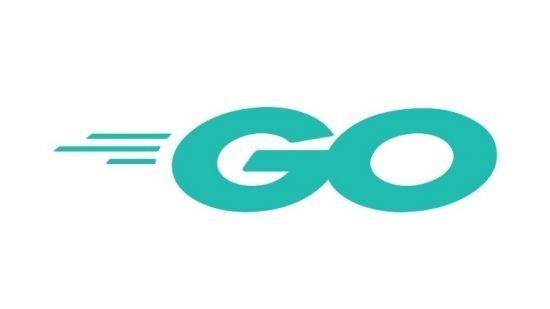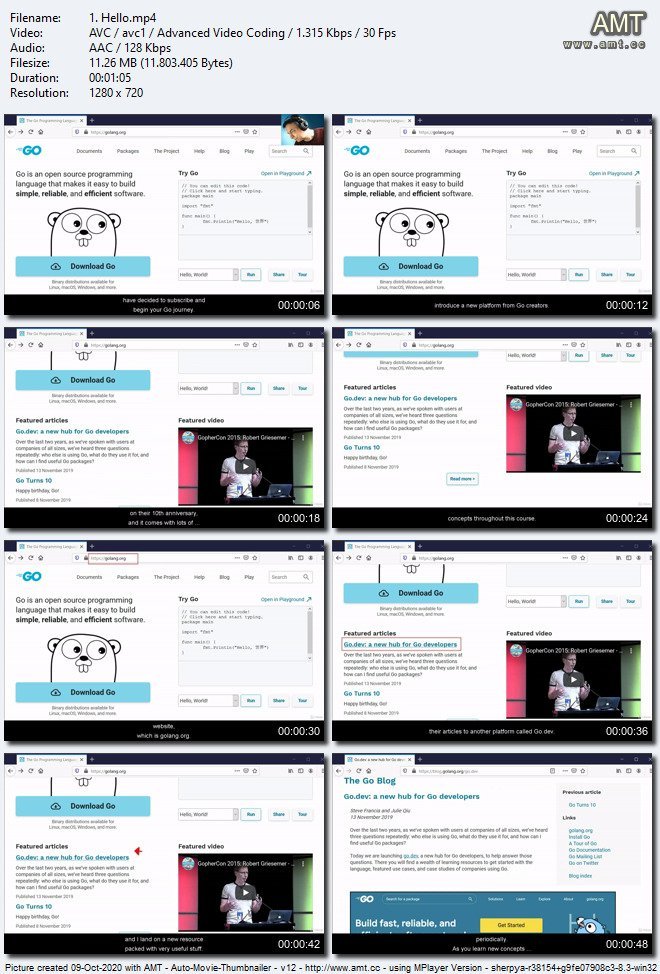 MP4 | Video: h264, 1280×720 | Audio: AAC, 44.1 KHz, 2 Ch
MP4 | Video: h264, 1280×720 | Audio: AAC, 44.1 KHz, 2 Ch
Genre: eLearning | Language: English + .srt | Duration: 61 lectures (4h 16m) | Size: 948.4 MB
Introduction to Golang, the new general-purpose programming language. GO is the first language you need to know in 2021.
Introduction to Golang, the new general-purpose programming language. GO is the first language you need to know in 2021.
What you’ll learn:
Learn basic Go programming by working through 60+ short exercises.
Retain what you learn. The exercises are recursive to help you remember.
You will learn some advanced concepts by writing simple code.
Dynamic illustrations will help you understand each lecture effortlessly.
Learn Go as a first or second language. The course does not assume any experience from you.
Requirements
No prerequisites. Everything is explained from the ground up.
Description
This course will help you grasp the rudiments of the Go language without rushing your learning experience.
By the time you finish this course, you will be empowered with a solid foundation to study advanced Go elsewhere.
Do subscribe and let’s begin now. Everyone is welcome.
What you will learn
To be more effective, this course is purposefully limited in scope. Attempting to cover everything about Go would not be practical, and it would do you a disservice. However, you will learn quite a lot in a very short time.
“The Go Programming Language Tutorial – Volume 1” covers the fundamentals of Go in plain language and offers exercises in the following topics:
Basic syntax introduction.
Variables.
Data types and their purpose.
Control flow with if, else, and switch.
Basic functions, arguments, parameters.
Passing data by value.
Passing data by reference with pointers.
Loops.
How to install and test Go locally.
Basic command line or terminal skills.
How to get input data from the keyboard
How to create files and folders via the terminal.
How to create a Go file.
How to run a Go file.
How to create an executable file from Go source code.
Introduction to input output in Go and how to write to a file.
Some advanced concepts that need to be covered early on.
(Data structures will be covered on a separate volume. you will not need them for the Go exercises discussed in this project).
Learn to code in less than 10 minutes a day
I know, it is really hard to return home after a long day’s work and still try learning something new.
You want to study a programming language, perhaps your very first one, but at the end of the day, your energy is just not there.
So, what can you do?
Choose a programming language that matters in 2020 and beyond
With so many languages to choose from, what if you pick the wrong one and only discover your mistake months later?
Should you go with JavaScript, Python, C#, or C? Should you select a more modern one, like the Go language from Google?
So many decisions and so little time.
Welcome, this project was designed for you.
My friend, if you feel overwhelmed but still want to learn something new, this course series is for you.
First, you will be learning one of the hottest languages in the planet, the Go language or Golang.
Learning Go will put you ahead of the game.
But even if you don’t care about language popularity and demand, the Go language is a great tool to work with because it is simple, very powerful, and contemporary.
Go is well written, and studying it may clear up any confusion you have about older languages you already know.
You see, other languages offer a variety of ways to accomplish a similar outcome.
In contrast, Go offers a one-way to write code and write it well, and that makes the language easier to learn and easier to program with.
It also makes you a better programmer because you have more energy to think about solutions rather than syntax.
For example, when it comes to loops, why should you learn so many keywords, such as while, do, until, for, and so on?
The creators of Go decided that we only need a single keyword to declare a loop, the for keyword.
When programmers know what they’re doing, they avoid unnecessary abstractions that bloat the language. You can write any other loop outcome by just using FOR. As a benefit, you will not have to memorize unnecessary commands that lead to the same outcome.
That’s simplicity at its best.
In addition, this course series takes in consideration your limited daily study time. Here, topics are written recursively and with plenty of self-contained exercises so that you don’t have to start afresh when you forget things after taking a few days off.
And every concept is explained in plain language, avoiding industry jargon. If you are present for a few minutes a day, you will learn how to program in Go.
And that’s it, my friend. I was thinking of busy people like you when I designed this course. If you invest a few minutes a day with it, you will learn and grow, and you’ll still have enough of your evening to enjoy quality time with your family and friends.
Subscribe now, and let’s get started.
Why this course?
As the quantity-of-data that humans and machines post on the Internet grows,
so does the need to intelligently process it and extract several types of knowledge from it.
The instructions in this course are recursive and designed for deep learning.
Each topic is essential to assist you on mastering the Go language,
and every aside comment reinforces the subject matter, avoiding unnecessary complications.
Why the Go language?
Go is a minimalist language and that helps writing correct, clear and efficient code.
If taught properly, the Go language is simple and easy to start.
Go provides high performance like C/C++, super efficient concurrency handling like Java, and fun to code like Python/PHP/JavaScript.
Go is a modern language but with 60 years of experience under its belt.
General interest in the Go language has been going up steadily, unlike other popular languages such as JavaScript and PHP (see Google Trends for details).
Go was designed at Google in 2007 to improve programming productivity in an era of multicore machines. The creators wanted to address shortcomings of other languages used at Google, but keep their useful characteristics.
Here are some of the languages that influenced and informed the design of Go, making it a better language:
C: statement and expression syntax
Pascal: declaration syntax
Modula 2, Oberon 2: packages
CSP, Occam, Newsqueak, Limbo, Alef: concurrency
BCPL: the semicolon rule
Smalltalk: methods
Newsqueak: <-, :=
Plus lessons good and bad from all those, as well as the following:
C++, C#, Java, JavaScript, LISP, Python, Scala, and other languages.
Go is the future, but don’t wait…
Subscribe now, even if you intend to start learning later.
Who this course is for
Total beginners with zero programming experience.
Lifetime students with no programming experience who would like to learn by doing.
Retired professionals who want to get into programming.
It professionals who want to learn a modern language like Go.

Password/解压密码0daydown
Download rapidgator
https://rg.to/file/6b9b24dce74521154eb12b0cc3a55aa6/The_Go_Programming_Language_Tutorial_-_Volume_1.rar.html
Download nitroflare
https://nitroflare.com/view/D655F3FB1E168DF/%2Cst_The_Go_Programming_Language_Tutorial_-_Volume_1.rar
转载请注明:0daytown » The Go Programming Language Tutorial – Volume 1